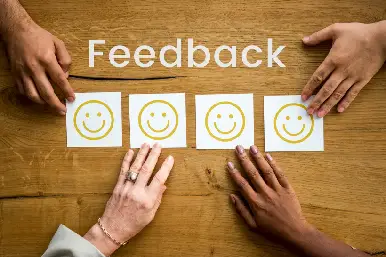How to Develop High Potential Employees by Aligning Purpose With Performance

Every business wants strong performers. But those who stand out are often more than just skilled, they’re driven by purpose. If we want to truly develop high potential employees, we must connect what they do with why they do it. It may have talents, but having talents is not enough at all. People become energized, concentrated, and devoted when they realize how their contribution fits into the greater scheme of things. That is where real growth occurs-not only for that one person, but for the entire team.
Aligning performance with purpose can unleash potential and build a stronger future for the organization; let’s show.
Table of Contents
Start With What Drives Them
High-Performance workers often seem to have a mutual relationship with more than a paycheck; they want to impact things. Understand the things that drive them so you will better support their growth by asking them what type and level of impact they want to create. What problems excite them? What kind of work gives them energy?
Understanding their inner drive helps you offer them roles or projects that feel meaningful. This doesn’t just increase output, it also builds loyalty.
Give Them a Role That Fits Their Why
Once you know their purpose, align it with their responsibilities. This means shaping their tasks in a way that supports both business goals and personal values. A person who values creativity should be allowed to explore ideas, not just follow fixed steps. Someone driven by helping others might thrive in roles with team support or customer focus.
This kind of matching is key when you develop high potential employees. It tells them they matter and when people feel valued, they perform better.
Teach Them to Lead Themselves First
People with strong internal direction grow faster. That is why High Potentials and Self-Leadership go hand-in-hand. It is in even inspiring them with self-leadership to let such persons recognize their strengths and weaknesses. Guide the employee on how to establish target goals and how to review them on a regular basis. They just don’t work harder with clear ownership of the path; they get smarter.
Encourage this attitude with open communication, ongoing performance appraisals, and opportunities for self-direction, and self-managed employees are more resilient and learn faster through experience.
Create a Clear Path for Growth
It’s not enough to say “you have potential.” People want to know what will happen next. Have a clear growth plan-an outline of steps, skills needed, milestones meant to reach. This kind of structure helps with confidence and commitment.
Leadership Development is needed at this point. Do not just promote, but develop talent. They need training, mentorship, and stretch assignments. Challenge them in ways they are encouraged to grow but not burned out. This shows that you are investing in their long-term success rather than immediate outcomes.
One inspiring example comes from Author Bill Dickinson, who enlightens that one’s most significant supposition has to do with himself discovering one’s self as well as reflected within his responses. His leadership workbook helps professionals learn how to grow not just as workers, but as whole individuals, something every high potential employee needs.
Encourage Leadership Through Real-World Practice
Experience is the greatest teacher. If you want future leaders, let them lead today. Whether this is through leading a project, mentoring a peer, or managing a team for a short while. These experiences help in developing people leader skills, a must-have for any high potential employee looking to advance.
Start small and provide support. The goal is to build confidence, not perfection.
Around the mark of any leadership plan, you’ll find insight from a Leadership Development Author for Executives. These professionals have realized that you cannot train leaders-to-be in technical skills without instilling in them clarity, care and emotional intelligence.
Celebrate Progress, Not Just Outcomes
Acknowledge the work itself, not just the results. When employees feel that their growth has been recognized, they become involved in it. Celebrate little things-the way the person deals with conflict better, says something new, or helps someone within the office all the way to big wins.
It tells people that they are not only performing, they are evolving. That’s the message that keeps potential on track.
And if you’re building a system to support these individuals, consider tools found in any great Book On Executive Coaching Skills. These resources often focus on how to guide performance in a way that honors the human behind the goals.
Final Thoughts
To develop high potential employees, you need more than a checklist, you need a connection between purpose and performance. People actually grow best when they know their outcome, have support from other people, and can see an opportunity ahead. Align what you actually do with why you do it, to create motivated, thoughtful, and engaged leaders. It also creates a workplace where people don’t just work, they thrive.
As your team members evolve, your entire organization will benefit. Because when you develop high potential employees, you’re not just building careers, you’re building a better future for your company.


